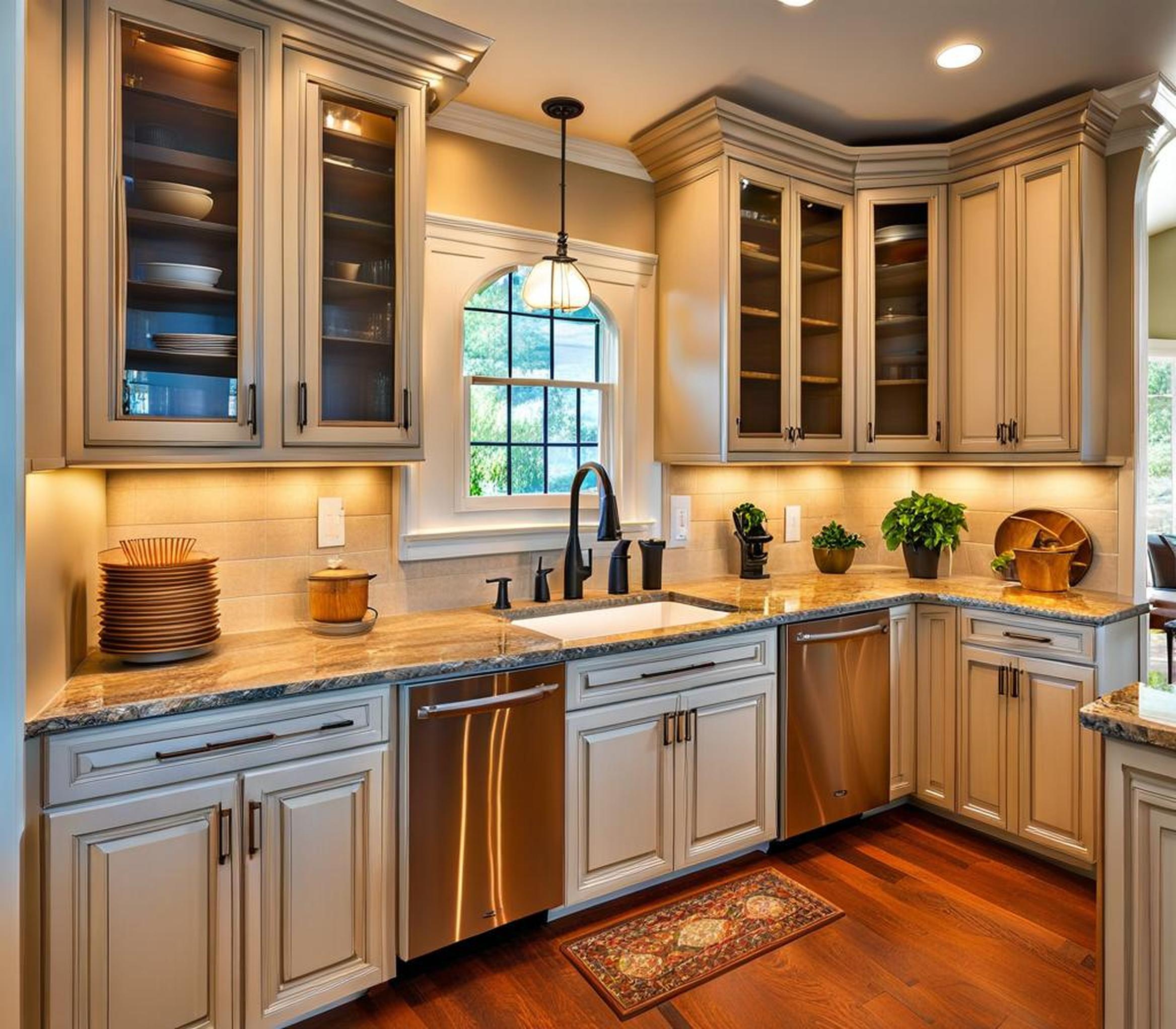When embarking on a kitchen remodel or designing a new home, one of the most important decisions is the selection of cabinets. From functionality to aesthetic, cabinets play a pivotal role in kitchen design. However, before finalizing any choices, it’s wise to understand exactly how long those new cabinets can be expected to last.
In reality, precise kitchen cabinet longevity is complicated. Predicting an average lifespan proves challenging as many variables affect durability over decades of use. By exploring the many factors impacting cabinet endurance, we can better set accurate expectations for how long our kitchen storage workhorses will meet our needs.
Cabinets Lifespans Vary Greatly
While some sources quote kitchen cabinets lasting anywhere from 10 to 50 years on average, the actual lifespan range is extreme. Budget cabinets may survive only two years before falling apart or requiring replacement. Meanwhile, premium quality designs continue functioning for over 75 years given the right conditions.

What accounts for such radical differences? The materials used, quality of construction, installation methods, and care can either shorten or extend useful cabinet life dramatically. Even small daily choices like properly closing doors and avoiding moisture contact leave cabinets less vulnerable to early failure.
High-End Cabinet Lifespan
Custom-built luxury cabinets constructed from solid wood rather than particle board provide unmatched longevity. Dovetail joinery and strong mounting to studs prevents loosening over time. Multiple coats of protective finish resist moisture, spills, and scratches.
In optimal environments, the sturdy build quality and resilient materials of premium cabinets allow them to operate smoothly for over 50 years. Rich woods like cherry and maple age beautifully while retaining structural integrity. With careful use and upkeep, they potentially last over 75 years until a desired style update necessitates replacement.
Low-End Cabinet Lifespan
At the other extreme lies inexpensive stock or RTA cabinetry found at home centers or online distributors. Mass production with machines tends to result in looser joinery susceptible to loosening. Thin particle board constitutes the box construction, vulnerable to chips, cracks, and warping.
Regular opening of ill-fitting doors strains low-quality hinges until panels detach completely. These economical cabinets manage around 5 years before serious aesthetic or functional issues emerge. Even with prudent daily use, their bargain build quality limits viability compared to premium equivalents.
Refacing to Extend Cabinet Life
Rather than fully replacing outdated but structurally sound cabinets, homeowners can modernize through refacing. Specialists remove doors, drawers, and hardware to add new fronts and surfaces in the chosen style and materials.
Refacing artfully disguises existing cabinet boxes while refreshing the look. Opting for durable front choices like wood veneers or thermofoil laminate modifies aesthetic only. Clean boxes can endure decades beyond the typical 20 year remodel cycle with updated facade limiting costs.
By refacing, previously viable kitchen cabinets seamlessly earn an extra 5-10 years of service life. The smart financial decision extends total lifespan while achieving wanted facelift results through strategic upgrades.
Replacing Outdated Kitchen Cabinets
Despite quality materials and construction, most cabinets eventually seem outdated or worn enough to warrant full replacement. The average kitchen sees a complete remodel every 20 years as styles evolve. Dark ornate wood and frosted glass doors common in the 1980s and 1990s appear dated today.
Though structurally intact, visible wear diminishes aesthetic. Modern conveniences like dividers, pull-out shelves, and lazy susans refresh user experience. At some point, even durable cabinets fail to meet evolving needs regardless of physical lifespan.
Rather than attempting to salvage worn cabinets through repainting or staining, replacement provides longer-term improvement. Refacing delays the inevitable for 5-10 years only. Allocating a remodeling budget to new cabinetry offers an advanced refresh.
Signs You Need New Kitchen Cabinets
Home chefs gradually acclimate to subtle kitchen cabinet deterioration over years of use. Coping with sticking doors, sagging shelves, or cracked surfaces seems natural until assessing issues collectively. Several clear signals indicate pursuing new cabinets despite their current functionality:
- Visible Damage: Cracks, chips, peeling finishes expose brittle materials unfit for heavy use. These structural weaknesses tend to proliferate rapidly.
- Water Issues: Years of moisture exposure from leaky pipes or cleaning cause permanent swelling damage. Once substrate integrity becomes compromised, repair proves difficult.
- Poor Functionality: Over time, doors and drawers gradually loosen and sag. Failed hardware results in lackluster accessibility and convenience during meal preparation.
While each flaw alone seems minor, together they hinder seamless cooking and entertainining. Don’t resign yourself to deteriorating cabinets. Consider renewal through full replacement or resurfacing.
Maintaining Cabinets for Longevity
Day to day upkeep plays a pivotal role in achieving maximum cabinet lifespan. From cleaning to humidity control, prudent homeowners greatly extend viability through conscientious care:
- Daily : Promptly wipe spills, splatters, or condensation using warm water and mild soap. Thoroughly dry surfaces.
- Weekly : Clean knobs, handles, doors using approved cabinet cleaner. Inspect for new damage.
- Humidity Control : Use dehumidifier to maintain 40%-50% humidity. Avoid leaks promptly.
- Ideal Conditions : Preserve wood integrity by keeping indoor temperatures under 85degF and away from heating/cooling vents.
- Professional Care : Have specialists adjust doors/drawers, replace broken hardware to maintain structural integrity.
Don’t defer seemingly small signs of deterioration. Early intervention preserves operation while achieving the 50 year average lifespan possible.
When selecting new kitchen cabinets, the range of potential longevity directly correlates to quality and materials. While durability varies widely, most cabinets require replacement or refacing within 10-20 years.
By investing in premium designs, protecting against moisture, and performing preventative maintenance, 75 years of smooth performance is achievable. Home chefs willing to properly care for and upgrade cabinets are rewarded with enduring style and function for decades beyond newly built expectations.
